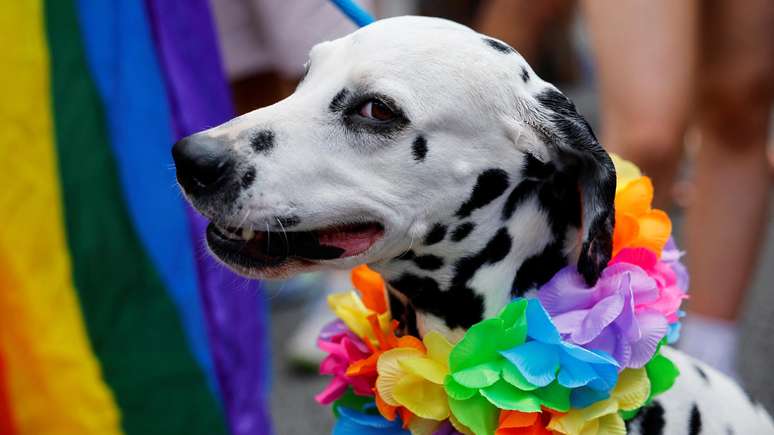Nonhuman animals have the capacity to have feelings and, therefore, can exhibit intentional behaviors.
html[data-range=”xlarge”] figure image img.img-c0037668d8c8205af757b434efdfdab5bzsy2qdm { width: 774px; height: 435px; }HTML[data-range=”large”] figure image img.img-c0037668d8c8205af757b434efdfdab5bzsy2qdm { width: 548px; height: 308px; }HTML[data-range=”small”] figure figure img.img-c0037668d8c8205af757b434efdfdab5bzsy2qdm, html[data-range=”medium”] figure image img.img-c0037668d8c8205af757b434efdfdab5bzsy2qdm { width: 564px; height: 317px; }
We tend to think that joy, fear and sadness are emotions unique to humans. But science is gradually discovering that this statement is totally wrong.
On July 7, 2012, an international group of neuroscientists met in the city of Cambridge, UK, and drafted the well-known Cambridge Declaration on Consciousness.
In short, experts have established that our species is not alone in possessing the neurological basis that generates consciousness. In other words, nonhuman animals have the capacity to have feelings and, therefore, can exhibit intentional behaviors.
This also applies to the ability to experience the sensation this article is about: anxiety.
In both dogs and people, anxiety is simply a form of reaction to certain problematic situations. But when it exceeds a certain intensity or exceeds the adaptive capacity, anxiety becomes pathological.
Warning signs

How can we identify if our dog is in this state?
Different forms of behavior indicate your willingness to escape feeling restless, nervous, insecure, and unwell.
Anxiety arises when the dog has an expectation that something bad is about to happen. This expectation triggers the sympathetic nervous system, which is responsible for the body’s reactions to dangerous or stressful situations, causing the animal to display intense behavior.
When anxiety is pathological, the symptoms we can find are: continuous alertness, hyperactivity, excessive licking, hair loss, digestive problems, howling, shaking, moaning, excessive barking, exaggerated fear, aggression and destructive behavior, which can increase when the dogs are left alone.
The situations capable of provoking this pathological anxiety are also different: fear of being alone, noises such as fireworks, storms or traffic… any incident that exceeds your ability to adapt or that occurs frequently can trigger anxiety.
Often these are problems generated by the human misunderstanding of one’s own needs, as a species and as an individual.
Diagnosis and treatment
If prolonged, pathological anxiety can cause diseases over time, such as gastrointestinal disorders, increased incidence of tumors or alterations of the immune system, not to mention damage to the coexistence of species.
Added to this is our sadness and frustration at seeing a pet suffer, without knowing how to help it.
The first step in treating anxiety, after being diagnosed by your vet, is behavior therapy, conducted by an ethologist or animal behavior specialist.
Medicines can be administered if the specific case requires it, even under the supervision of the veterinarian.
This intervention can be compared to that of the psychologist and psychiatrist on human beings. The psychologist specializes in understanding behavior, while the psychiatrist is dedicated to mental disorders and their pharmacological treatment.
While each case has its particularities, behavior therapy should include the following goals:
– Reduce the dog’s stress levels;
– Teach him to handle problematic situations;
– Offer resources to calm down;
– Reduce your sensitivity to the precursors of anxiety. The animal may interpret our actions of taking the keys, putting on the coat or putting on the shoes, for example, as the previous step to being alone. We have to make it clear to him that this does not necessarily mean that we will leave;
– Assign the dog a clear function within the family. We need to do activities with him to make him feel integrated, such as playing or going for a walk, so that the dog and the owner have fun;
– Make the dog have social independence. I mean, we can’t be with him all the time, or solve all of his problems.
If the learning process is difficult because anxiety levels are too high or because of the animal’s specific circumstances, the process must be supplemented with medication.
It may be convenient to resort to medication, for example, when the dog feels anxious when left alone and, because his guardians work, he needs to spend at least eight hours without company. The dog cannot be in a constant state of distress.
It should also be understood that, as in our species, there are circumstances that generate prolonged stress – which lead to the “state of anxiety” – and profiles of a more anxious nature, the so-called “trait anxiety”.
The search for the causes of pathological anxiety and its control should not be limited to controlling the consequences of the use of drugs, but should also improve the attention we offer them as sensitive and social beings who need adequate activities for each individual.
*Nuria Máximo Bocanegra is an occupational therapist, professor in the Department of Physiotherapy, Occupational Therapy, Rehabilitation and Physical Medicine, and director of the Chair of Research with Animals and Society at King Juan Carlos University, Spain.
Mónica Kern, a canine educator who specializes in training guide dogs and is a volunteer at the animal-assisted intervention organization “Perruneando Madrid”, Spain, contributed to this article.
This article was originally published on the academic news site The conversation and here republished under a Creative Commons license. Read the original version in Spanish.
Source: Terra
Ben Stock is a lifestyle journalist and author at Gossipify. He writes about topics such as health, wellness, travel, food and home decor. He provides practical advice and inspiration to improve well-being, keeps readers up to date with latest lifestyle news and trends, known for his engaging writing style, in-depth analysis and unique perspectives.








